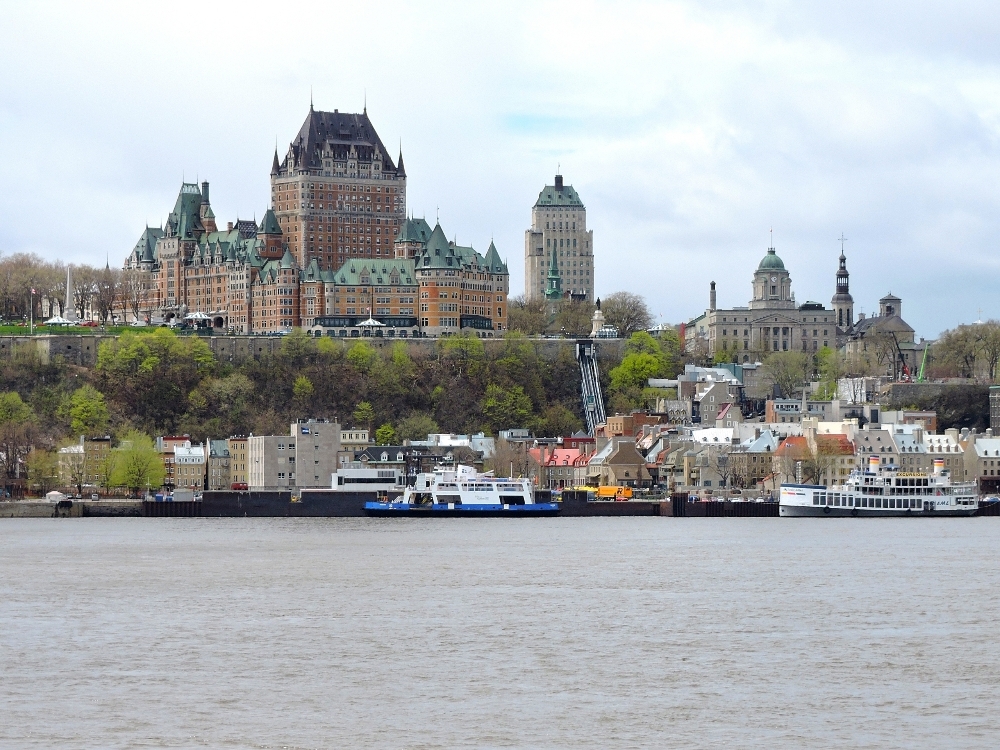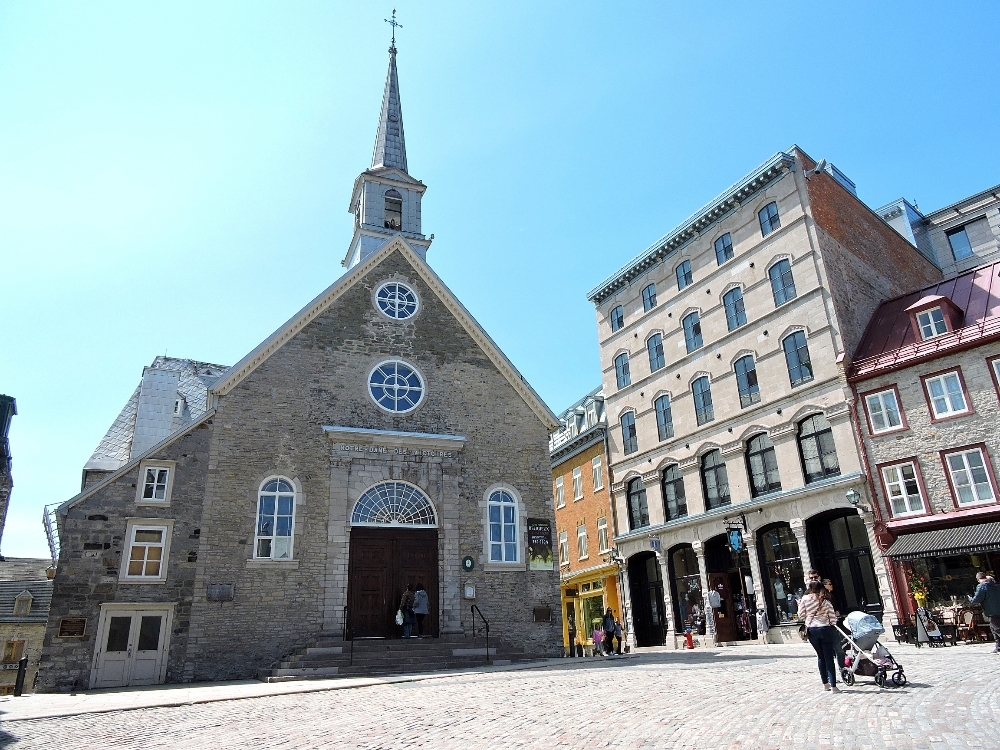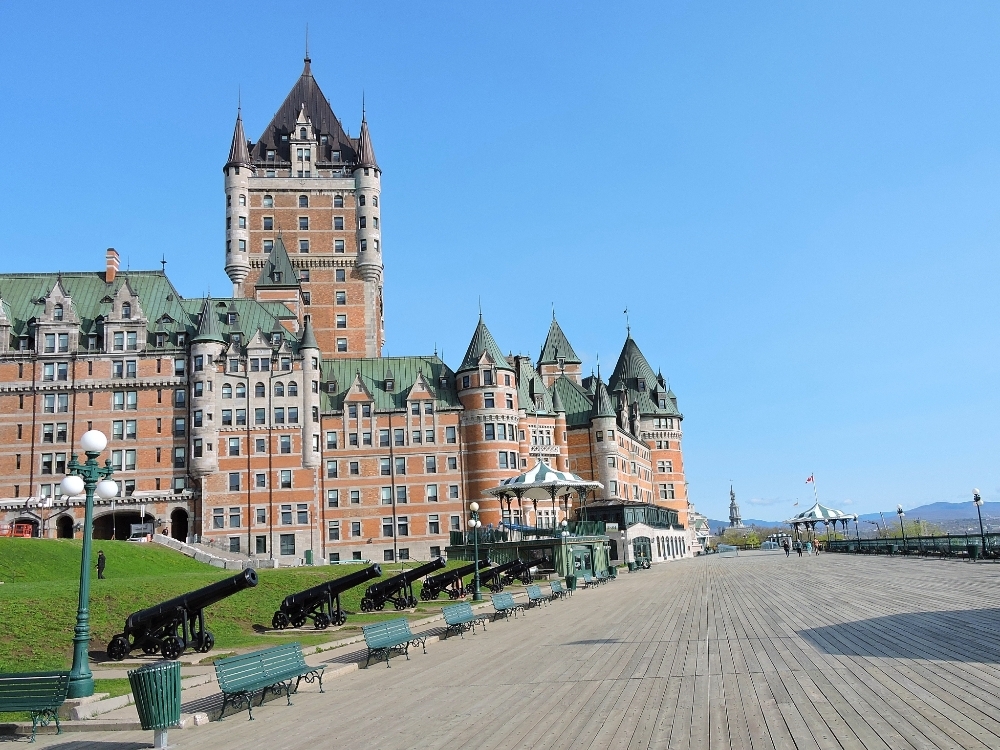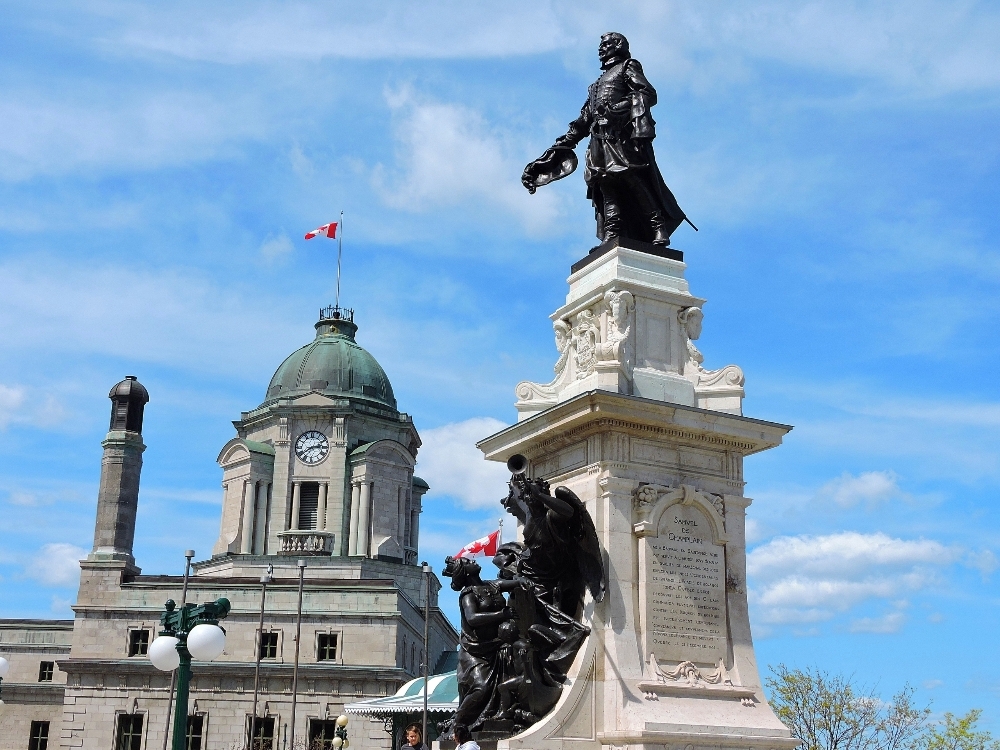When I was a graduate student in Western Massachusetts, back in the late 1980s, I often tossed around the idea of gathering up some of my colleagues and taking a weekend trip to Montreal, which was not especially far away. However, people in that stage of life are noted for always being short of both time and money, so that excursion never happened. So it was pleasing to me that I was able to finally make that trip during the World2 Tour. Of course, I exchanged Montreal for Quebec City, which has the advantages of being considerably smaller, always a smart move on a tour, and also being a WHS, which made the decision effortless.
I arrived by taking the short ferry across the Saint Lawrence River, from Levins, which is the only sensible way to reach the city when approaching from the south. It was not difficult to locate low-traffic roads to the dock so my entry into the city was essentially painless. The ferry also has the advantage of providing a quite picturesque scene to greet first-time visitors, as well as for local residents, I suppose.

The historic quarter of Quebec City was given WHS status for being the best example of a French Colonial settlement in North America. Indeed, there are many beautiful and historic structures, built long ago, that are still in use, or preserved for their cultural value. It is a notable circumstance that the Old City today contains structures from all the various periods of Quebec’s past, from the early French period, the British Colonial period, and the Canadian period. The ferry brings passengers to the Lower section of the city, which was once a small residential and commercial quarter. In common with many historic cities in modern times, Quebec’s old buildings are now mostly occupied with various tourism-related businesses, boutiques, galleries, restaurants, and similar enterprises. It is understandable that this situation has arisen in many places, but it always give me a somewhat odd feeling of not quite participating in in either the old or new world as I walk through the town. Here, the juxtaposition of old and new has been managed in reasonably good taste, which makes a big difference, however.

The upper section of the town is where the military fortifications, government and religious buildings, and monuments are located, and, especially with regards to the forts, it is obvious why this location was the perfect choice for the city at the time it was built. Also located there is the iconic, and massive, Hotel Fairmont Le Château Frontenac, built by the Canadian National Railroad, which, while not being especially old, blends in perfectly with its Colonial neighbors. I did not spend much time visiting the interiors of any of the older buildings, apart from a quick walk through the hotel, but was instead satisfied with simply strolling around admiring their interesting exteriors. As with most older cities, walking is easy, thanks to the human-scale design originally used. I finished the day by relaxing and catching up of some of my writing, on the wonderful Terrace Dufferin which provides amazing views of the City and the River below.


I enjoyed my day off in Quebec City, especially since I was there on one of the few sunny days the region has seen of late, and found it easy to appreciate why the city was given its WHS status. My only complaint is that there were many renovations and repairs going on, obviously having been started just after winter had passed, and being rushed to completion before the busy summer tourist season really kicks off. So there were a number of dumpsters, scaffoldings, and the like, in places that adversely affected what would have otherwise been ideal photographic spots.